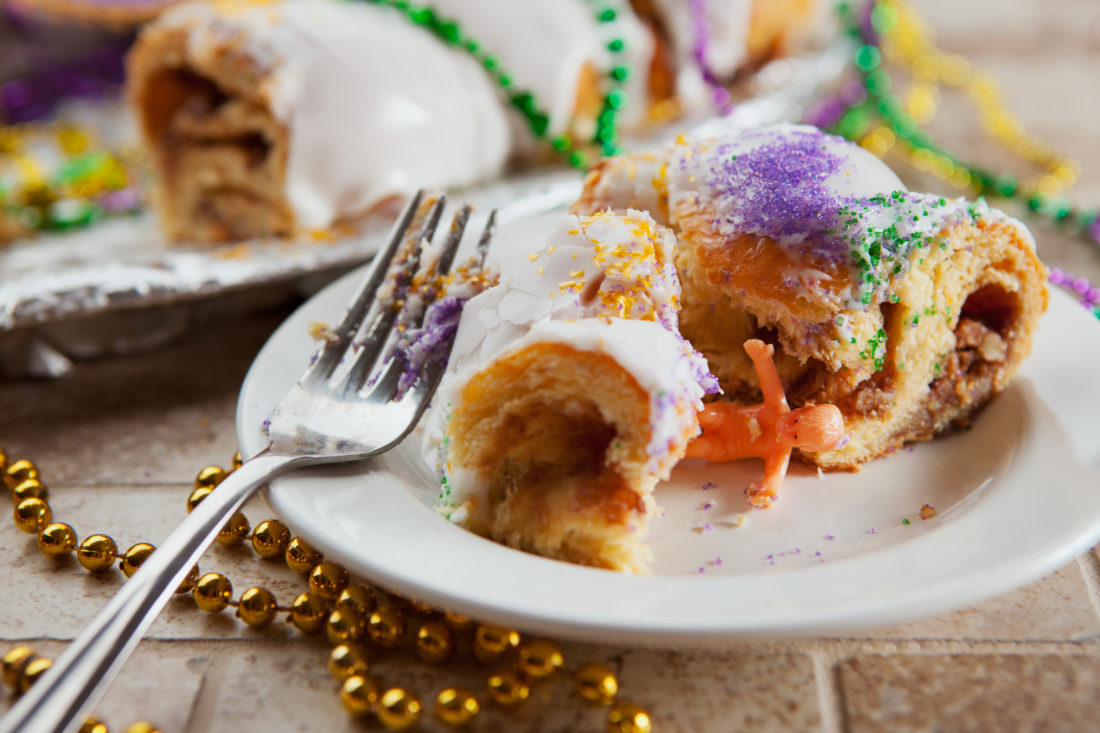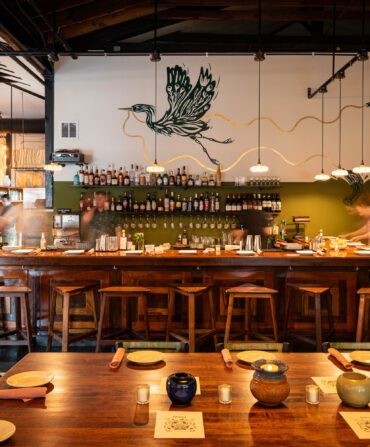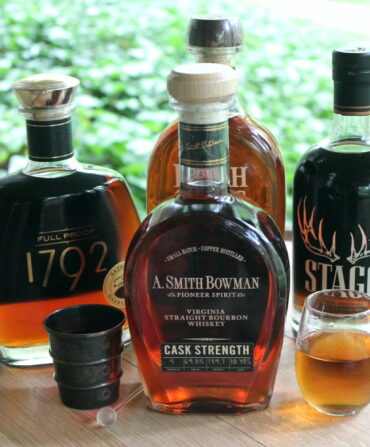January and February mean that it’s king cake season: Bakeries all over Louisiana churn them out by the purple-green-and-gold thousands, many of them containing a plastic baby that symbolizes, to the one who finds it in their slice, luck, prosperity, and the responsibility to provide the next king cake. “But what we see today is quite different from the original celebration,” says Liz Williams, the founder and president of the Southern Food and Beverage Museum in New Orleans. Here, Williams takes us through how the king cake tradition has evolved (and if you’ve ever gotten the baby, you’ll be glad times have changed).
In Europe, before the rise of Christianity, ancient pagan cultures held a celebration that centered around a cake—the original king cake. A dried fava bean, believed to be magical (and also used for voting), would be tucked into a slice. “They would pick a ‘fool’ to be king for a day,” Williams says. “And in those early days, they killed the person who got the bean after—you can’t have two kings.” It was a way, Williams hypothesizes, to get rid of someone for political reasons.
The Middle Ages changed that. “With Christianity came the tendency of religion to absorb pagan customs,” Williams explains. The Catholic Church incorporated the tradition into the celebration held on January 6th—Epiphany, or Three Kings’ Day. The killing was long gone by this point, but the bean (called “la fève,” in France) remained. “By that time, the cakes were more developed, and they took more of a king-for-the-party approach.” The Mardi Gras, or carnival, season came to open on January 6 and last until Fat Tuesday, before Lent.
As they settled in the Americas in places like New Orleans and Mobile, the French held on to their Mardi Gras traditions. “Celebrating this way wasn’t new to these people—they just brought it with them,” Williams says. By the 1900s, king cake had become more affordable, and Mardi Gras was becoming a more public affair. The lucky bean-finder at a king cake party would have to throw the next party a few days later (it was serious business, Williams says, “you’d be some kind of snake if you didn’t do it—nobody would forget”).
Until the mid-twentieth century, the bean remained the king cake’s favor, until a bakery in New Orleans named McKenzie’s decided to set their cake apart by swapping it for a porcelain doll figurine called a frozen Charlotte. “It became all the rage to have a McKenzie’s king cake to get a doll instead of the bean,” Williams says. “People started calling them ‘baby dolls’—and then they shortened that to just ‘baby.’”
When frozen Charlotte dolls became scarce, Williams explains, plastic babies quickly rose to take their place. They often looked like the baby Jesus in the manger, and since the celebration was connected to Three Kings’ Day, people came to think that the baby was indeed supposed to represent Jesus. “But it has nothing to do with Jesus,” Williams says. “It was this progression from bean, to baby doll, to baby, to baby Jesus.”
Today, plastic babies tucked into king cakes abound, but some bakeries favor old traditions still—Haydel’s Bakery, in New Orleans, produces an annual line of collectable Mardi Gras–themed porcelain figures (this year, due to COVID, they are using retro figures leftover over from previous years dating back 1991). And Williams notes that Dong Phuong Bakeshop produces king cakes made with brioche dough, after the southern French tradition. “We incorporate the croissant technique, and laminate the dough with lots of butter, and it comes out less dense, and flaky,” says baker Linh Garza.
Tradition today dictates that if you bite into the slice with the baby, you bring the king cake to the next party. All iterations considered, from fève and fool to frozen Charlottes and Jesus, it’s a much sweeter deal than that original celebration.








